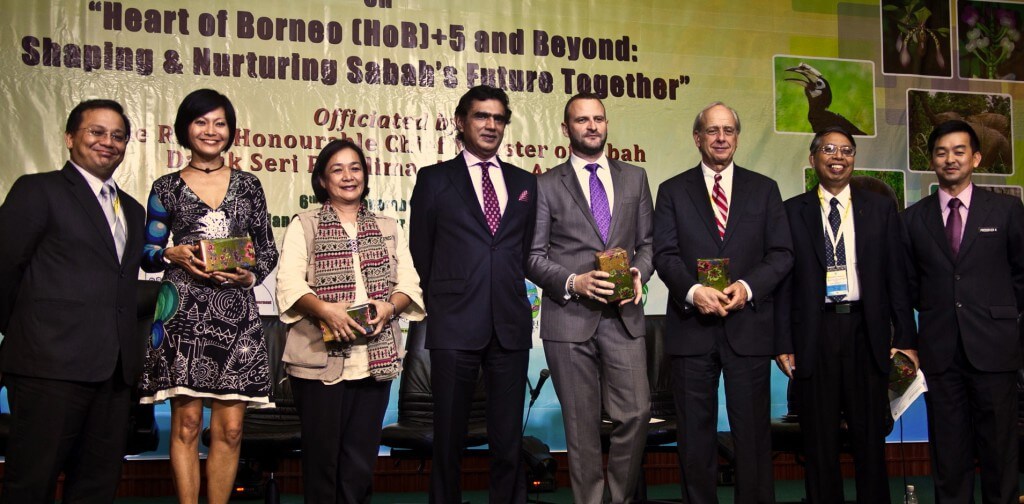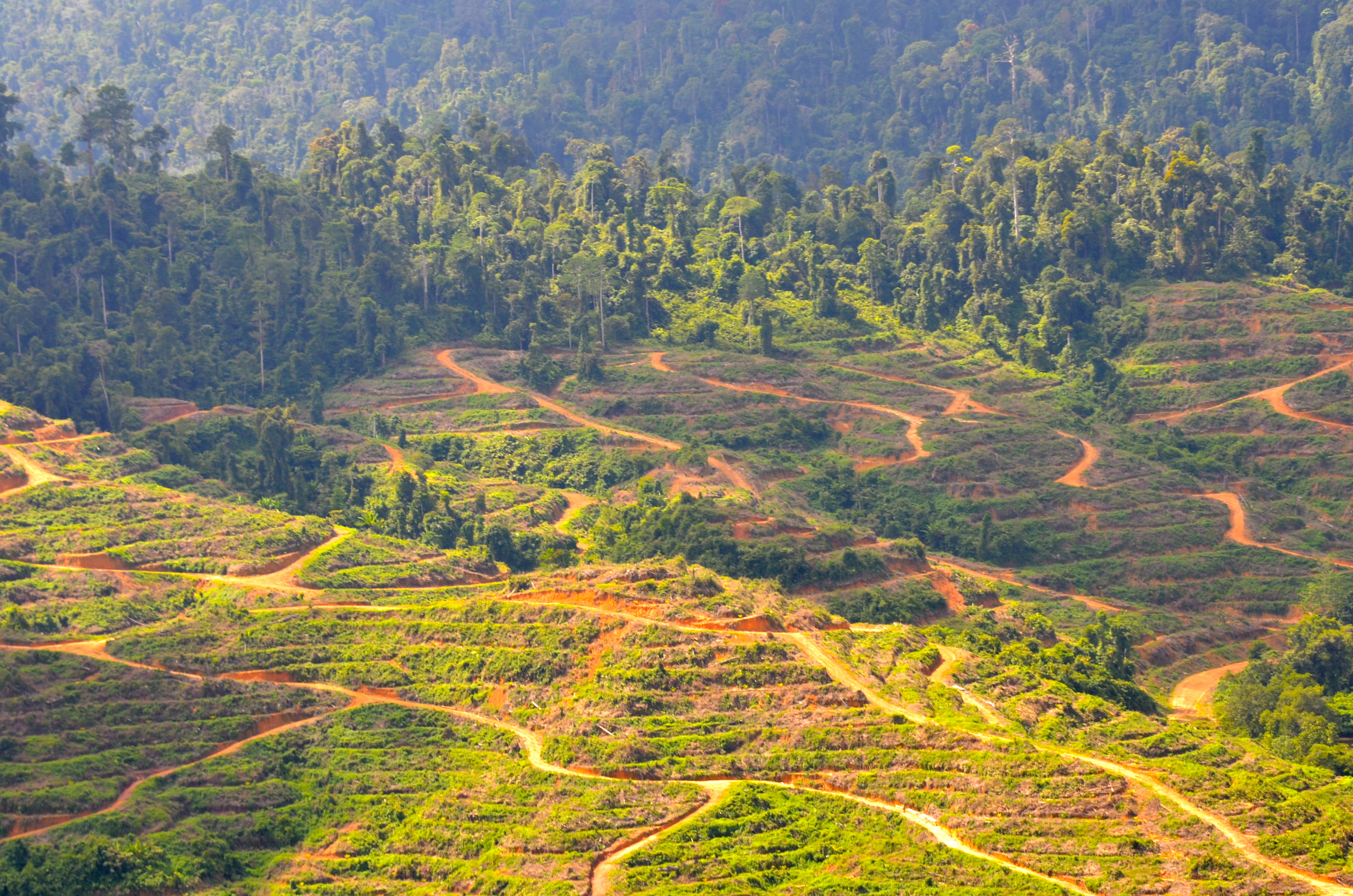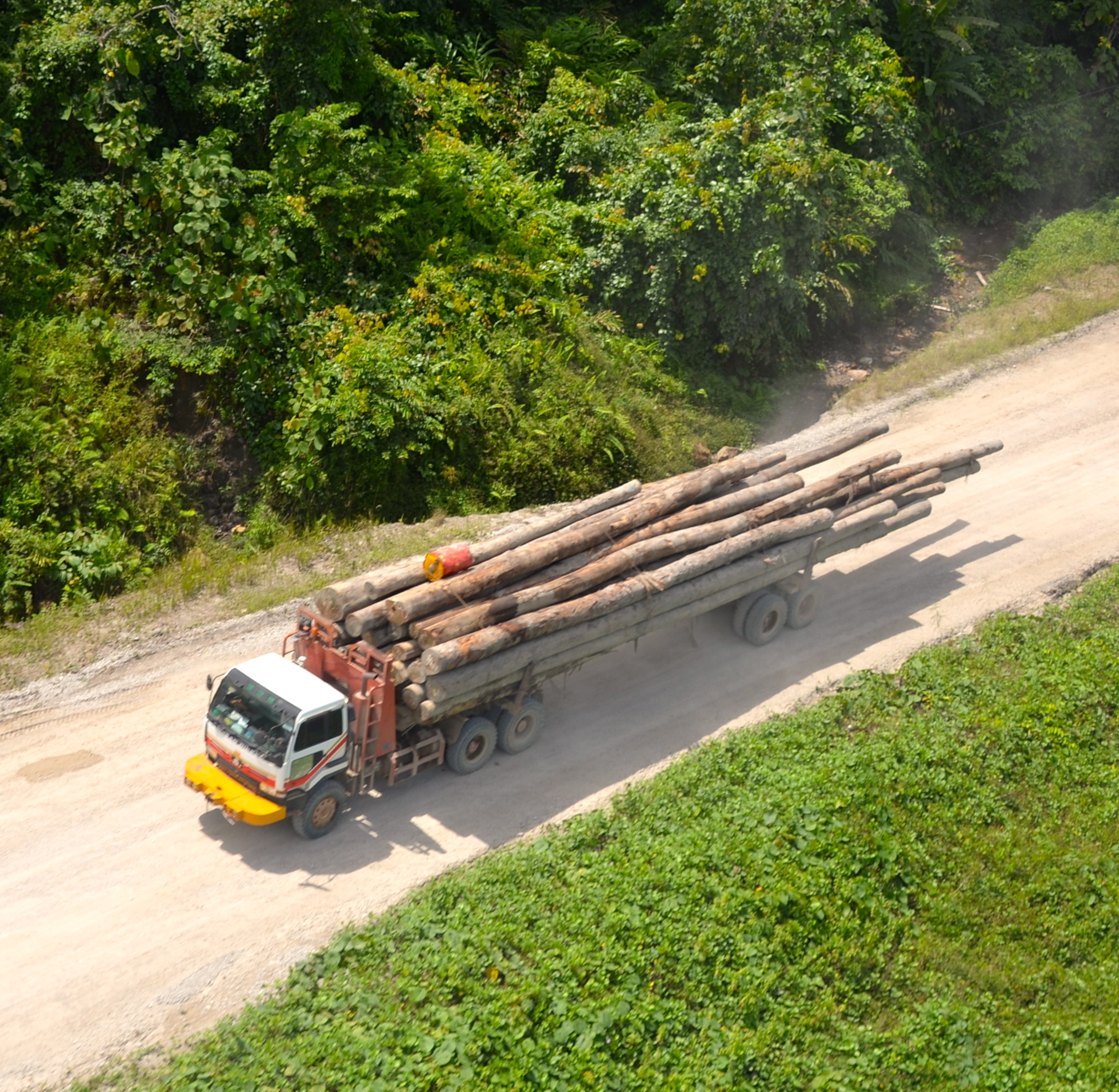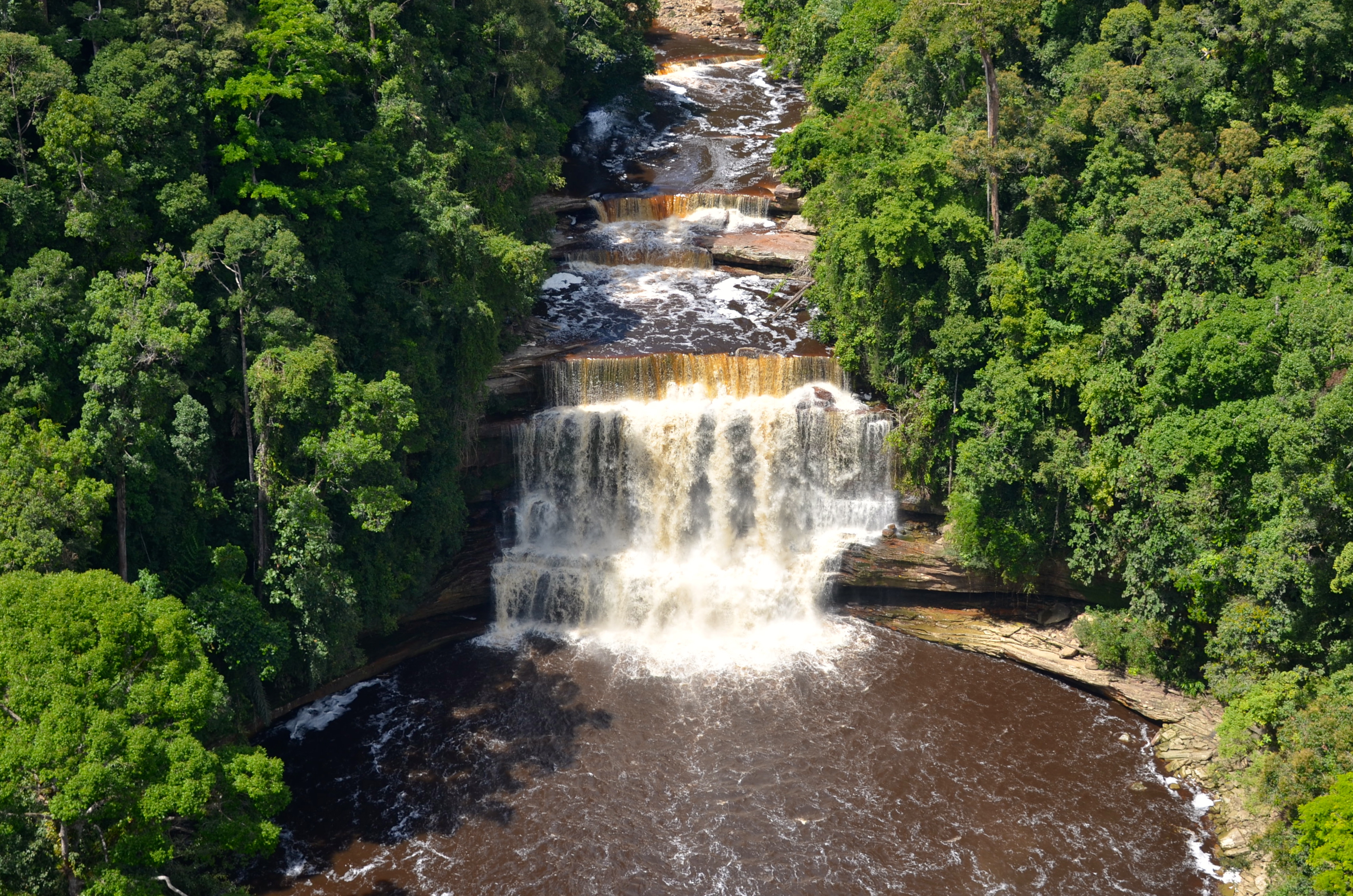News and Events
ADP Founder Speaks at International Conference to Protect Borneo’s Rainforests
AD Partners was pleased to participate in “Shaping and Nurturing Sabah’s Future Together,” an international gathering highlighting pathways to protect some of the most vulnerable, pristine rainforests in the world. Datuk Sam Mannan, Director of Sabah Forestry Department, hosted the meeting. Under his leadership, tremendous gains have been made with regard to the protection of Malaysia’s first-growth, centuries-old rainforests. He helped to initiate “Forever Sabah,” a program that is viewed as a model for integrated environmental protection.

From left to right: Secretary-General Darrel Webber, Roundtable on Sustainable Palm Oil; Cynthia Ong, CEO, Land Empowerment Animals People; Anne Lasimbang, CEO, PACOS Trust; Datuk Sam Mannan, Director of Sabah Forestry Department; Dr. Glen Reynolds, Director of Royal Society’s South East Asia Rainforest Research Program; Jeff Horowitz, Founder, Avoided Deforestation Partners; and Prof. Abd Latiff Mohamad, Chairman of Board of Trustees, WWF-Malaysia
Forever Sabah: Borneo’s Game Changing Model for the World!
Nov. 6, 2012 – Forever Sabah, an initiative in support of Sabah’s transition to a diversified, equitable green economy, was announced today at the International Conference on Heart of Borneo (HoB)+5 and Beyond.
Moderated by Secretary-General Darrel Webber of the Roundtable on Sustainable Palm Oil, the conference’s panelists included Datuk Sam Mannan, Director of Sabah Forestry Department; Cynthia Ong, CEO of Land Empowerment Animals People; Anne Lasimbang, CEO of PACOS Trust; Dr. Glen Reynolds, Director of Royal Society’s South East Asia Rainforest Research Program; Jeff Horowitz, founder of Avoided Deforestation Partners; and Professor Abd Latiff Mohamad, Chairman of Board of Trustees of WWF-Malaysia.
The panelists explained that the Forever Sabah initiative will be delivered through a ground-up, project-based approach focusing on Food and Agriculture; Renewable Energy; Tourism; and Water, Waste and Soil. In addition, panelists said that Sabah’s economic transition to ecological sustainability would be ensured by integrating a number of cross-cutting principles, including equity, inclusiveness, custodianship, integrity, evidence-based solutions, capacity building, and market-based approaches.
Cynthia Ong emphasized that at its core, Forever Sabah is an “on-going conversation,” inclusive of all voices. Ms. Ong also stressed that the program is already planning in for 2013-14 and is actively looking for partnerships, not aid.
Addressing the pressing issues of land rights and ecosystem protection, Jeffrey S. Horowitz, said that, “the Forever Sabah program needs to trickle down to the smallest of the small stakeholders…to ensure more sustainable and efficient land management.” Mr. Horowitz also advocated for using innovative market solutions as a means of paying for rain forest protection, as opposed to the traditional alternative of putting “big money on the table.” This strategy is especially important to the Sabah Forestry Department, as it considers whether and how to finance the expansion of its protected forests.
Anne Lasimbang expanded on Mr. Horowitz’s comments, remarking that she sees Forever Sabah as an opportunity for Sabah’s communities to make their voices heard, and merge indigenous knowledge with modern conservation strategies. Ms. Lasimbang was so confident in the value of the Forever Sabah initiative that she said the program must continue with or without funds.
Before closing the session, the panel stressed that the key to the success of Forever Sabah was trust among the various partners. They also recommended searching for commonalities instead of focusing on differences, with Ms. Lasimbang and Datuk Mannan pointing that a few years ago they could not have imagined sharing the same platform.
Reacting positively to the initiative, Sabah Minister for Tourism, Culture and Environment, Masidi Manjun stated that the government should seriously consider giving a matching grant for money raised by the private sector and NGOs. “Perhaps one way to make sure we have a sense of ownership is a partnership between the government, NGOs, companies and the public. The government may want to consider matching the fund voluntarily donated and raised by NGOs and people,” said Manjun.
Background
Begun in 2010, the Forever Sabah initiative set out to answer a fundamental question about the Malaysian state of Sabah in northern Borneo: If things continue as they are, what will Sabah be like 50 years from now? The answers were unequivocal: Sabah would be a bleak and unsustainable place. What was once the world’s third largest island and a mega biodiversity hotspot would be virtually devoid of life by 2060.
Forever Sabah emerged in the context of the recent development history and current economic development activity. Since 1963, when Sabah, along with Malaya, Sarawak and Singapore, formed Malaysia, almost 50% of its landmass has been converted from natural forest to large-scale agriculture, industrial and urban development. Today, Sabah has a pipeline full of multiple fast-track projects aimed at accelerating its already fast-growing economy. The federal government’s hope is to raise income levels so that Malaysia can achieve a developed, high-income nation status by 2020. This current national economic plan is designed to work through numerous industry sectors including the oil and gas, palm oil and tourism sectors – key areas active in Sabah.
Though social and environmental impact assessments have been done for the larger projects, they have failed to find ways to mitigate increasing pressures on ecosystems, and terrestrial and marine habitats. In addition, accelerated large-scale development generally ignores the fundamental needs and rights of Sabah’s diverse indigenous groups who are often displaced from their native lands.
The Forever Sabah group embarked on an enriching two-year engagement process that listened to the voices of indigenous people, civil society, government, industry players, scientists and anyone else who felt strongly about shaping a fair, prosperous and sustainable future for Sabah. This uniquely inclusive conversation catalyzed change, creating new relationships while empowering and energizing communities.
See photos of Sabah’s forests and other resources below. Also, for more information, visit:
www.forever-sabah.com
http://www.leapspiral.org
www.forest.sabah.gov.my
http://www.pacostrust.org/
http://www.searrp.org/
http://www.rspo.org/
www.heartofborneo.org
http://www.theborneopost.com/2012/11/07/govt-should-match-fund-raised-by-ngos-masidi/
Photographs of the Borneo Rainforest

Lowland dipterocarp forest is increasingly rare in Borneo, but some of the best surviving forest on the island is located in Sabah.

Forests across Borneo are being rapidly converted for oil palm plantations. In this case, a steep forested hillside has been terraced for a palm plantation.

Conventional logging has taken a heavy toll on Borneo’s rainforests (see above and below). Extraction rates per hectare are higher than anywhere else in the world. However Sabah is pioneering with more sustainable approaches to managing forests.

The canopy walkway at Danum Valley gives visitors a close up look at the most biodiverse layer of the rainforest.
back to top



